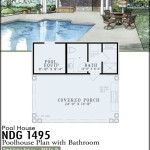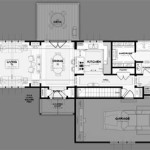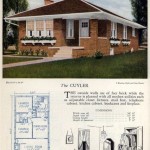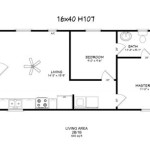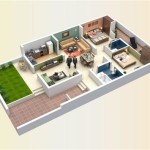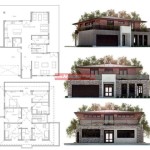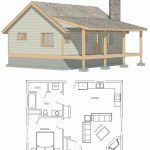Virtual Tour of House Plans: A Comprehensive Guide
The landscape of home construction and renovation has undergone a significant transformation with the emergence of virtual tour technology. This technology allows prospective homeowners and renovators to explore house plans in an immersive and interactive environment, overcoming the limitations of traditional blueprints and static images. A virtual tour of house plans provides a realistic experience of walking through a proposed dwelling, examining spatial relationships, and visualizing design elements before committing to construction.
The adoption of virtual tours is driven by the increasing demand for transparency, customization, and informed decision-making in the building process. By leveraging virtual reality (VR) and 3D modeling, virtual tours offer an unprecedented level of detail, enabling stakeholders to assess the suitability of a design, identify potential issues, and make necessary modifications early in the planning phase. This proactive approach minimizes costly errors, reduces construction delays, and ensures that the final product aligns with the client's vision.
This article explores the advantages, functionalities, and applications of virtual tours in the context of house plan design and selection. It will delve into the various features that enhance the user experience, the benefits for different stakeholders, and the evolving role of this technology in the future of home construction.
Key Benefits of Virtual Tours for House Plans
Virtual tours offer a multitude of benefits to all parties involved in the home building or renovation process. These advantages range from improved design visualization to enhanced communication and reduced costs. Understanding these benefits is crucial for appreciating the transformative potential of this technology.
One of the primary advantages is
enhanced visualization
. Traditional blueprints and 2D renderings often fail to convey the true spatial relationships and overall feel of a house. Virtual tours, on the other hand, provide a three-dimensional, interactive experience that allows users to explore the layout, appreciate the flow of spaces, and understand the impact of design choices on the overall ambiance. This immersive experience helps clients better understand the design intent and identify potential areas for improvement before construction begins. The ability to virtually "walk through" the home allows for a more intuitive understanding of scale and proportion, which can be difficult to grasp from static drawings.Another significant benefit is
improved communication and collaboration
. Virtual tours serve as a common platform for architects, builders, and clients to discuss design options and address concerns. By viewing the same virtual representation, all parties can align on the design vision and identify potential conflicts or areas of misunderstanding. This collaborative environment fosters a more efficient and transparent design process, reducing the risk of miscommunication and costly rework. For instance, a client might realize that a particular doorway is too narrow after virtually walking through it, prompting a discussion about widening the opening before any physical construction occurs.Furthermore, virtual tours contribute to
reduced costs and errors
. By identifying potential design flaws and spatial inefficiencies early in the planning phase, virtual tours can prevent costly mistakes during construction. Addressing these issues virtually is significantly less expensive than rectifying them after construction has commenced. For example, a client might discover that the proposed kitchen layout is impractical for their needs by virtually interacting with the space, leading to modifications before the cabinets are installed. This proactive approach minimizes the need for demolition and reconstruction, saving both time and money.Functionalities and Features of Virtual Tour Software
The effectiveness of virtual tours hinges on the functionalities and features offered by the underlying software. Modern virtual tour platforms provide a range of tools that enhance the user experience and enable detailed exploration of house plans. These features allow users to customize their viewing experience and interact with the design in a meaningful way.
A key feature is
interactive navigation
. This allows users to move freely through the virtual space, exploring different rooms and areas at their own pace. Navigation tools typically include options for walking, flying, and zooming, providing different perspectives and levels of detail. Some platforms also offer pre-defined pathways or "walkthroughs" that guide users through the key areas of the house. The interactive nature of the navigation encourages exploration and allows users to fully immerse themselves in the design.Customization options
are another essential aspect. Users should be able to customize various elements, such as wall colors, flooring materials, and furniture arrangements, to visualize different design possibilities. This feature allows clients to experiment with different aesthetics and personalize the space to their liking. For example, a client might want to see how different paint colors would look in the living room or how a specific type of flooring would complement the overall design. The ability to customize these elements empowers clients to make informed decisions about their design choices.Integration of
multimedia elements
further enhances the value of virtual tours. This includes the ability to incorporate images, videos, and audio commentary into the virtual environment. For example, the software might allow embedding videos explaining the features of specific appliances or providing audio commentary describing the design intent behind a particular element. These multimedia elements add depth and context to the virtual experience, providing users with a more comprehensive understanding of the house plan.Finally,
measurement tools
can be invaluable for assessing the dimensions and proportions of different spaces. These tools allow users to measure distances, heights, and areas within the virtual environment, ensuring that the design meets their specific requirements. For example, a client might want to measure the width of a doorway to ensure that their furniture will fit through it. The availability of measurement tools provides added confidence and helps prevent sizing-related issues during construction.Applications of Virtual Tours Across Stakeholders
The benefits of virtual tours extend to various stakeholders involved in the home construction process, each leveraging the technology for different purposes. From architects and builders to homeowners and real estate agents, virtual tours offer valuable tools for streamlining workflows, enhancing communication, and improving decision-making.
For
architects and designers
, virtual tours serve as a powerful tool for showcasing their designs and communicating their vision to clients. By creating immersive virtual representations of their house plans, architects can effectively convey the spatial qualities, aesthetic details, and functional aspects of their designs. This allows clients to better understand the design intent and provide informed feedback. Virtual tours also enable architects to identify potential design flaws or areas for improvement early in the process, reducing the risk of costly revisions later on. In addition, virtual tours can be used as a marketing tool to attract new clients and showcase their portfolio of work.Builders and contractors
can utilize virtual tours to improve communication with subcontractors and ensure that everyone is aligned on the design specifications. By providing a clear and detailed virtual representation of the house plan, builders can minimize misunderstandings and reduce the risk of errors during construction. Virtual tours can also be used to track progress and identify potential issues that need to be addressed. For example, a builder might use a virtual tour to show a subcontractor the exact location of electrical outlets or plumbing fixtures. The improved communication and coordination facilitated by virtual tours can lead to more efficient construction processes and higher quality results.For
homeowners
, virtual tours provide an opportunity to experience their future home before it is even built. This allows them to visualize the layout, appreciate the flow of spaces, and personalize the design to their liking. Virtual tours empower homeowners to make informed decisions about their design choices and ensure that the final product meets their needs and preferences. The ability to customize various elements, such as wall colors and furniture arrangements, allows homeowners to experiment with different aesthetics and create a personalized space that reflects their unique style. Furthermore, virtual tours can help homeowners identify potential issues or areas for improvement before construction begins, reducing the risk of costly revisions later on.Real estate agents
can leverage virtual tours to showcase properties to potential buyers in a compelling and engaging way. Virtual tours allow buyers to explore the house plan from the comfort of their own homes, providing a more immersive and informative experience than traditional photos or videos. This can be particularly valuable for reaching buyers who are located far away or who have limited time to visit properties in person. Virtual tours can also be used to highlight key features and amenities of the property, such as the spacious kitchen or the beautiful backyard. By providing a virtual walkthrough, real estate agents can attract more interested buyers and accelerate the sales process.In conclusion, virtual tours of house plans offer a transformative approach to home construction and renovation. By providing an immersive and interactive experience, virtual tours empower stakeholders to make informed decisions, improve communication, and reduce costs. As technology continues to evolve, virtual tours are poised to play an increasingly important role in the future of home design and construction.

Live 3d

How To Create A Virtual Tour For Real Estate In 10 Steps
Virtual Tours Sunrise Housing

Interactive 3d Floor Plan 360 Virtual Tours For Home Interior Design House

Virtual Tour Floorplan Trewidden House Gardens

Virtual Tour Floor Plan 360 Room View Rtv
Virtual Tours Sunrise Housing

How To Take A Virtual Tour Of Your 3d Floor Plan

Property 3d 360 Virtual Tours Additional Service Floor Plans

Floor Plan Virtual Tours Orbit Homes

